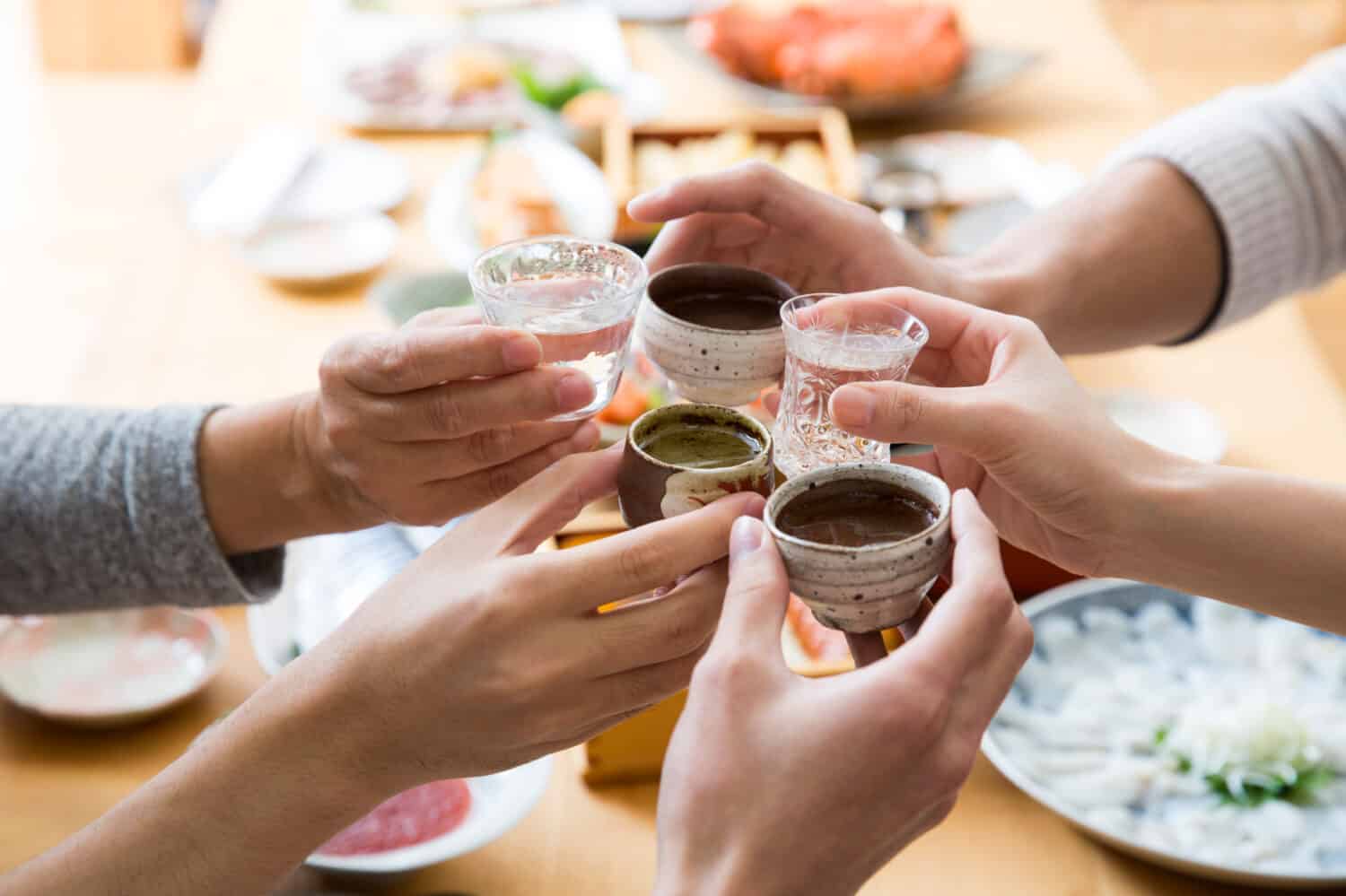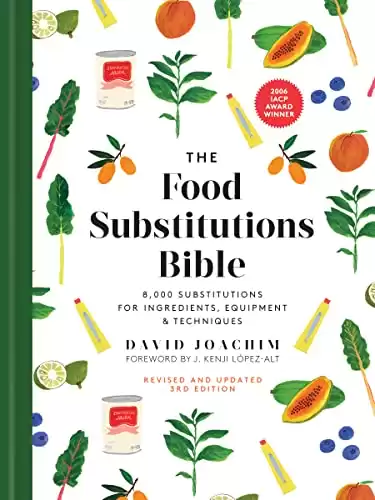Soju vs. Sake: What is the Difference?
What is soju? And what is sake? What are the differences between these two drinks? How do you serve them? Are they interchangeable? Well, both soju and sake originate in Asian countries (Korea and Japan, respectively) and enjoy global popularity. However, they differ in production, alcohol content, and taste. This guide will help novices and experts appreciate the unique aspects of these two drinks. So, let's dive in.
Soju is a clear, colorless alcohol frequently compared to vodka. It has become increasingly popular throughout the world with the rise of K-pop music, Korean television dramas, and Korean food. Soju is cheap to produce, too. Originally made with rice, soju producers now use barley, sweet potatoes, or other grains. A distillation process produces soju rather than a fermentation process. Producers distill contemporary soju several times to achieve a more neutral flavor.
On the other hand, sake is a rice-based alcohol created by the fermentation of yeast. Often called “rice wine,” its taste is more complex. Sake's taste is similar to beer, but it is much smoother and lighter. However, it doesn't have a lingering aftertaste like some spirits, even though it has a perfume-like floral aroma and faint savory smell. Like soju, sake pairs well with certain dishes. Additionally, it is useful in cooking.
- The must-have convenient reference guide for every home cook!
- Includes more than 8,000 substitutions for ingredients, cookware, and techniques.
- Save time and money on by avoiding trips to grab that "missing" ingredient you don't really need.
Let's look at these two popular national drinks and see how they compare. The table below provides a quick overview of the two liquors.
| Soju | Sake | |
|---|---|---|
| Production | Distillation | Fermentation |
| Main Ingredient | Barley, Sweet Potato | Rice |
| Taste | Similar to Vodka | Similar to Beer |
| Alcohol Content | 15%-46% | 15%-17% |
| Calories per 1.05% | 65 | 80 |
| Cooking | Marinades | Sauces and Soups |
History
Originating in the 14th century, soju has a long history. Mongol invaders introduced the distillation process to Korea, and distilleries began producing the cheap but popular alcohol. In 1965, after the government banned the use of rice in alcohol production, soju producers improvised by using sweet potatoes, barley, or tapioca. Furthermore, this change in production introduced some of today's most popular soju brands to the market.
While the origins of sake are more mysterious, this alcoholic beverage first appears in Japanese history in the year 712. For many years, the government was the only producer of sake, but in the 10th century, Buddhist and Shinto shrines began producing the drink. Furthermore, the drink became part of religious ceremonies and court festivities. Over the centuries, production has expanded. As a result, there are many flavors and brands of sake in today's market.
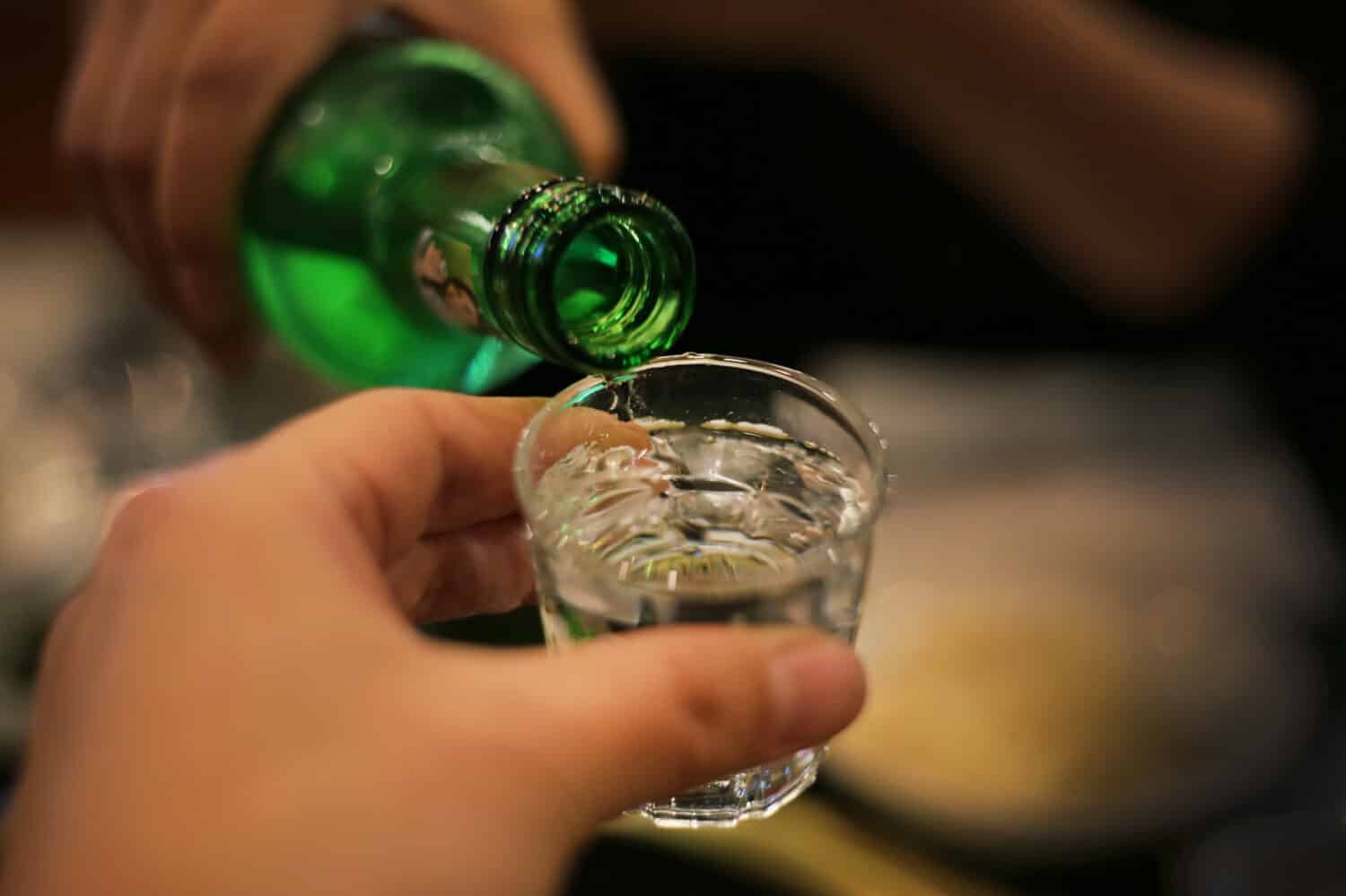
©journey601/Shutterstock.com
Ingredients and Production
Water, grain, yeast, and enzymes produce soju. The most typical grains are sweet potatoes, barley, or wheat, but some producers use apples or tapioca. Additionally, water helps soju achieve its desired taste and strength while diluting the alcohol content. Yeast ferments the grain and water, converting the sugar into alcohol. Finally, enzymes break down the starches into sugars.
While the flavors of soju may vary, the production process remains constant. Making soju is a lengthy process, typically taking about three weeks. Producers ferment grains with yeast and enzymes to make soju, and then distill the liquid. The distillation process is why this drink is called “burnt liquor.” After distillation, the distillers store soju in vats to age before they bottle and sell it. Manufacturers sometimes add flavors or sweeteners to lessen the alcohol content, just as producers love to add flavors to vodka.
Manufacturers make sake from rice, koji (a kind of mold), and water. It is a laborious process that involves many steps. To describe the process simply, people polish rice, then wash or soak it. Additionally, they treat it with koji mold and ferment it in a tank. Mashing occurs in the tank. Additionally, alcohol fermentation takes about a month to complete. Afterward, a pressing process releases the sake. Typically, manufacturers store sake in tanks or vats until they bottle it.
Appearance and Taste
While the appearance changes slightly depending on the ingredients, soju is clear and colorless. Its clean, smooth taste makes it a versatile liquor often used in cocktails. Its ingredients do influence its flavor. Barley-based soju has a toasty aroma, while sweet potato-based soju has a more herbal flavor.
Sake is also clear and colorless. It is often compared to the appearance of white wine. Like wine, there are different categories of sake, depending on the drink's dryness or sweetness.
- The must-have convenient reference guide for every home cook!
- Includes more than 8,000 substitutions for ingredients, cookware, and techniques.
- Save time and money on by avoiding trips to grab that "missing" ingredient you don't really need.
- Sweet Sake (Amakuchi) – This sake is very sweet, often paired with desserts.
- Dry Sake (Karakuchi) – Preferred by those who prefer sake drier, Karakuchi has less residual sweetness.
- Rich Sake (Umakuchi) – These sakes have a richer, more robust flavor.
- Light Sake (Usunigori) – Often cloudy in appearance because they are unfiltered, these sakes taste lighter.
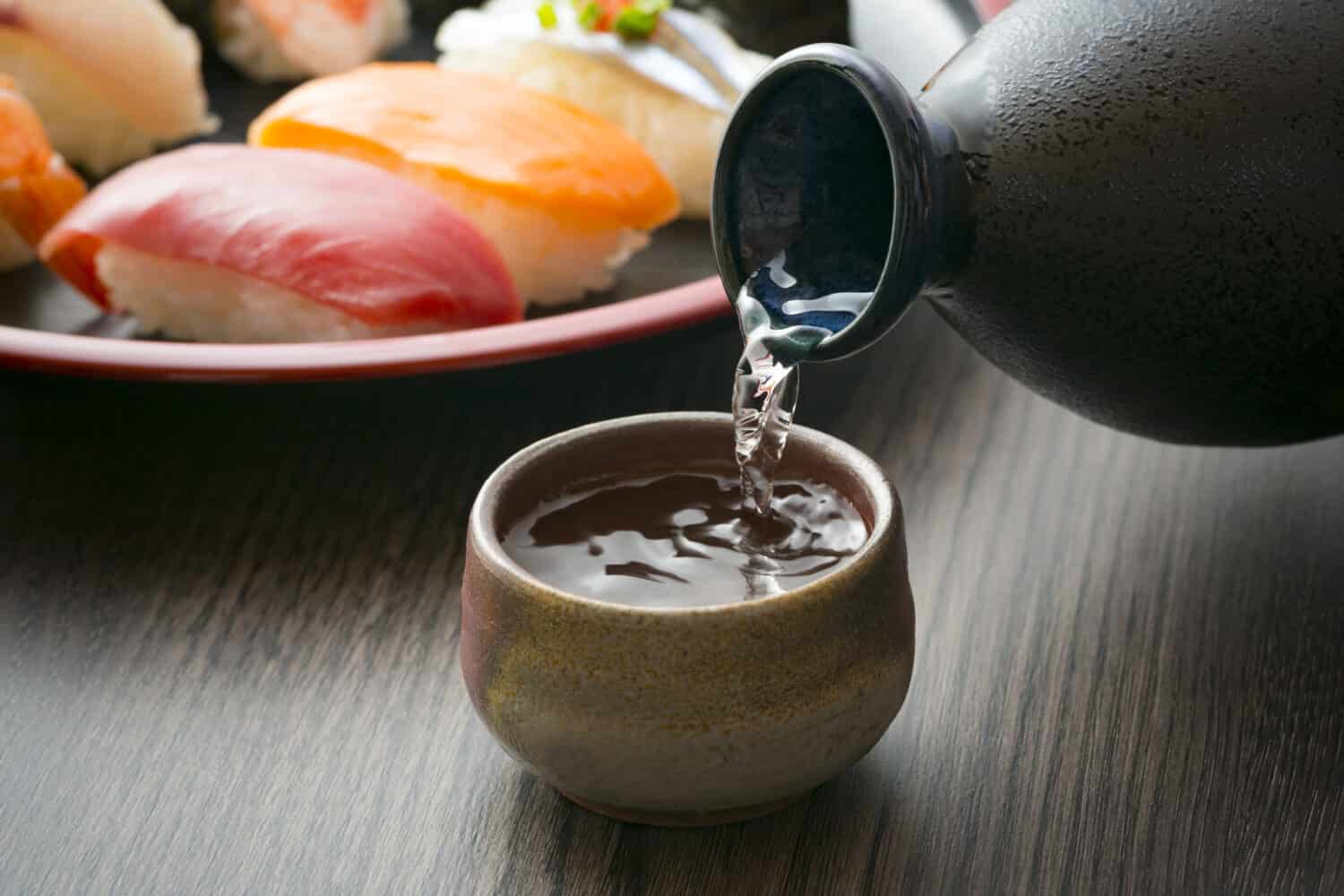
©Shinari/Shutterstock.com
Soju vs. Sake: Consumption
How to Drink Soju
Soju is the best-selling alcohol in the world because it is versatile. While great for cocktails, many people drink soju cold without ice, typically in a shot glass. Popular at social gatherings, soju has specific customs. First, swirl or shake the bottle, then jab the neck of the bottle to spill a little of the alcohol out of the top. Originally, people did this to distribute the sediment from the bottom of the bottle. Soju no longer has sediment in the bottom, but this tradition lingers. It is also tradition to serve the oldest person the first shot of soju out of respect.
If making cocktails with soju, there are many options. Pineapple soju is a popular mix of pineapple juice and Sprite. Strawberries, lemons, and sugar-infused in soju are also delicious. Soju also makes excellent mojitos and mudslides. Add soju to simmering recipes such as chicken stew and sauces.
How to Drink Sake
Drink sake hot or cold. Additionally, serve high-quality sake cold and serve cheap sake hot. Traditionally, people serve sake from a porcelain flask (tokkuri) in small ceramic cups (choko). Most people swirl their sake before drinking and enjoy smelling the floral aroma. Drink sake slowly, not only to enjoy the taste but out of respect for this ceremonial drink.
Enjoy sake during the appetizer phase of the meal. It also pairs well with sushi, especially sashimi or nigiri. Salads and vegetable stir-fry also pair well with this drink. Finally, you can use sake in various recipes, including soups and stews. Use sake as an excellent marinade and in sauces to intensify flavors. Brining, stir-frying, and rice-making are popular cooking methods with sake.
Alcohol Content and Calories
The higher the alcohol content, the higher the calorie count. Since soju has an alcohol content up to forty-six percent, it can have a lot of calories. Soju tends to have fruit flavorings, which means more sugar and calories. An average size bottle of soju has approximately 400 calories, which averages out to sixty-four calories per shot. Since soju bottles are typically small, drinking the entire bottle and adding calories would be easy. Consume soju in moderation, just like any other alcohol.
Sake has a lower alcohol content than soju but is still higher than the average beer. Sake can have up to seventeen percent alcohol, while beer averages five percent. One serving of sake averages 134 calories but no sugars, carbs, or fats. It also contains small amounts of minerals like selenium and zinc, which are good for you. Consuming sake slowly to enjoy the drink also brings fewer calories. While sake is a healthier option than soju or wine, consume this alcohol in moderation.
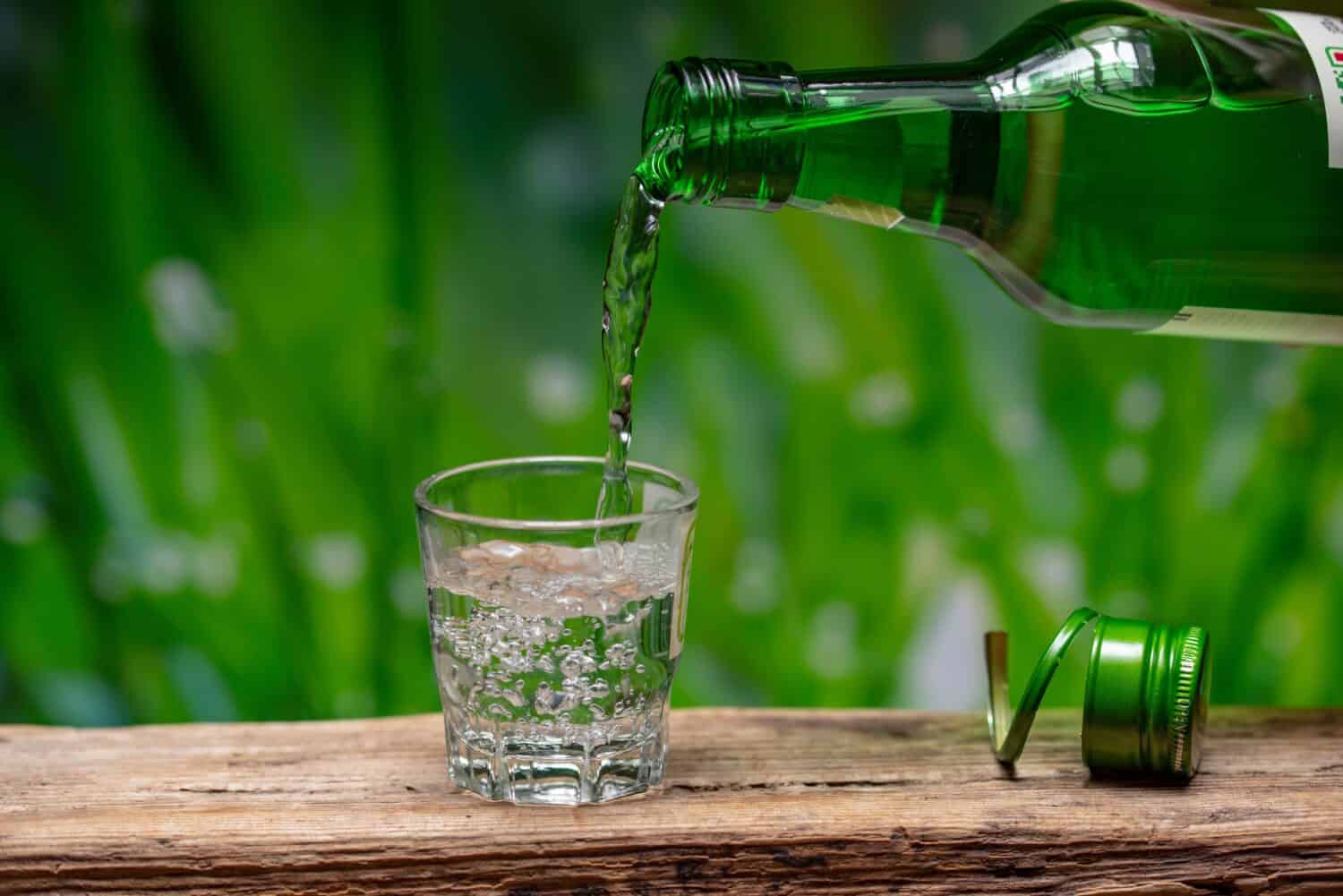
©SignMedia/Shutterstock.com
One Final Note
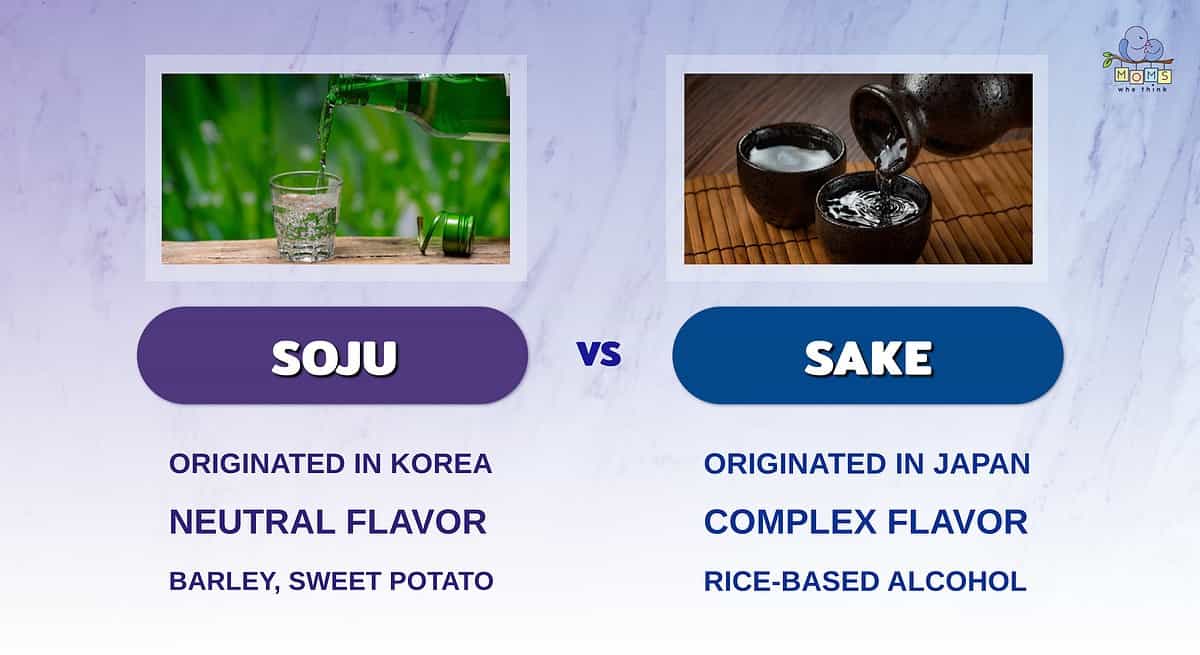
While soju and sake enjoy popularity outside their native countries of Korea and Japan, respectively, they are not interchangeable drinks. Soju and sake production is very different. Additionally, they have different taste profiles. Soju has a higher alcohol content and a taste similar to vodka. Socially, drinkers enjoy it in shot glasses. Sake is sweeter and closer in taste to beer. It is an excellent drink to sip slowly. Additionally, it pairs well with traditional Japanese cuisine. Finally, cooks use soju and sake in recipes but do not interchange them due to their taste differences.
Many patrons enjoy either of these drinks depending on the dish and the restaurant. Let's look at just a few of the differences of these two Asian beverages:
- Sake is considered sweeter and a bit heavier; however, soju goes down a lot smoother due to the distillation process.
- While still higher in alcohol than most drinks, sake has a lower alcohol content than soju, resulting in few calories, as well.
- Soju is considered pretty versatile and mixed in drinks. On the other hand, sake is served either hot or cold and sipped slowly.
The image featured at the top of this post is ©1427423/Shutterstock.com.
- The must-have convenient reference guide for every home cook!
- Includes more than 8,000 substitutions for ingredients, cookware, and techniques.
- Save time and money on by avoiding trips to grab that "missing" ingredient you don't really need.
